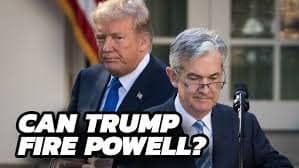
So, here’s the deal: The U.S. president can’t just fire the chair of the Federal Reserve, Jerome Powell, or any of the other board members before their term is up. The Federal Reserve is set up to be independent from the White House to make sure that decisions about monetary policy are based on solid economic data, not political pressures.
Jerome Powell was appointed by the president for a four-year term, but here’s the thing—he also has to be confirmed by the Senate. After his term, the president could reappoint him, but firing him isn’t something the president can just do on a whim. There’s a legal process for that, and Powell can only be removed for specific reasons, like inefficiency, neglect of duty, or misconduct.
So while the president has the power to appoint or reappoint the chair, actually firing him would be a major challenge and would take some serious legal maneuvering. This whole setup helps keep the Fed independent, which is super important for ensuring that U.S. monetary policy stays steady and unaffected by shifting political winds.





